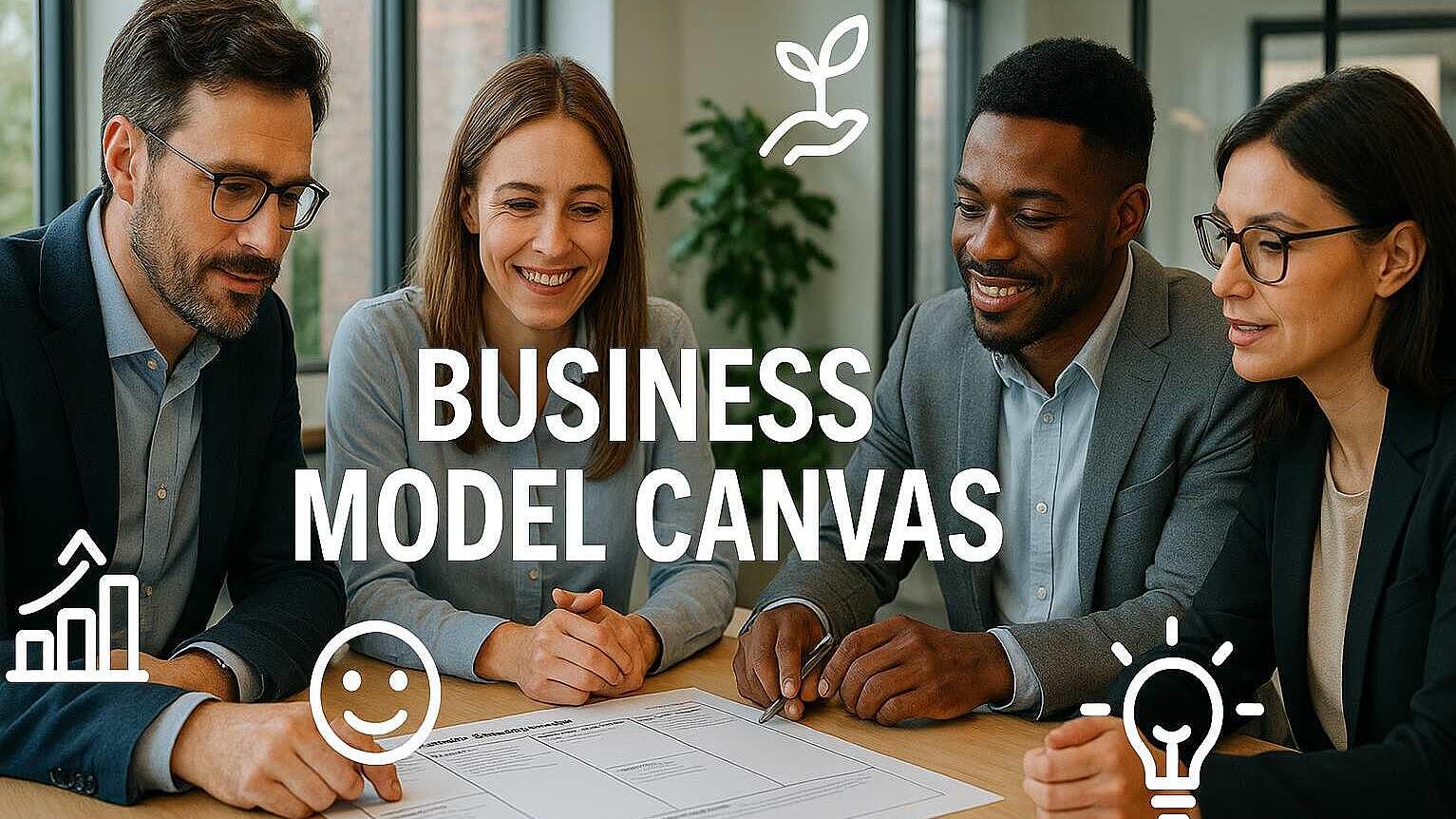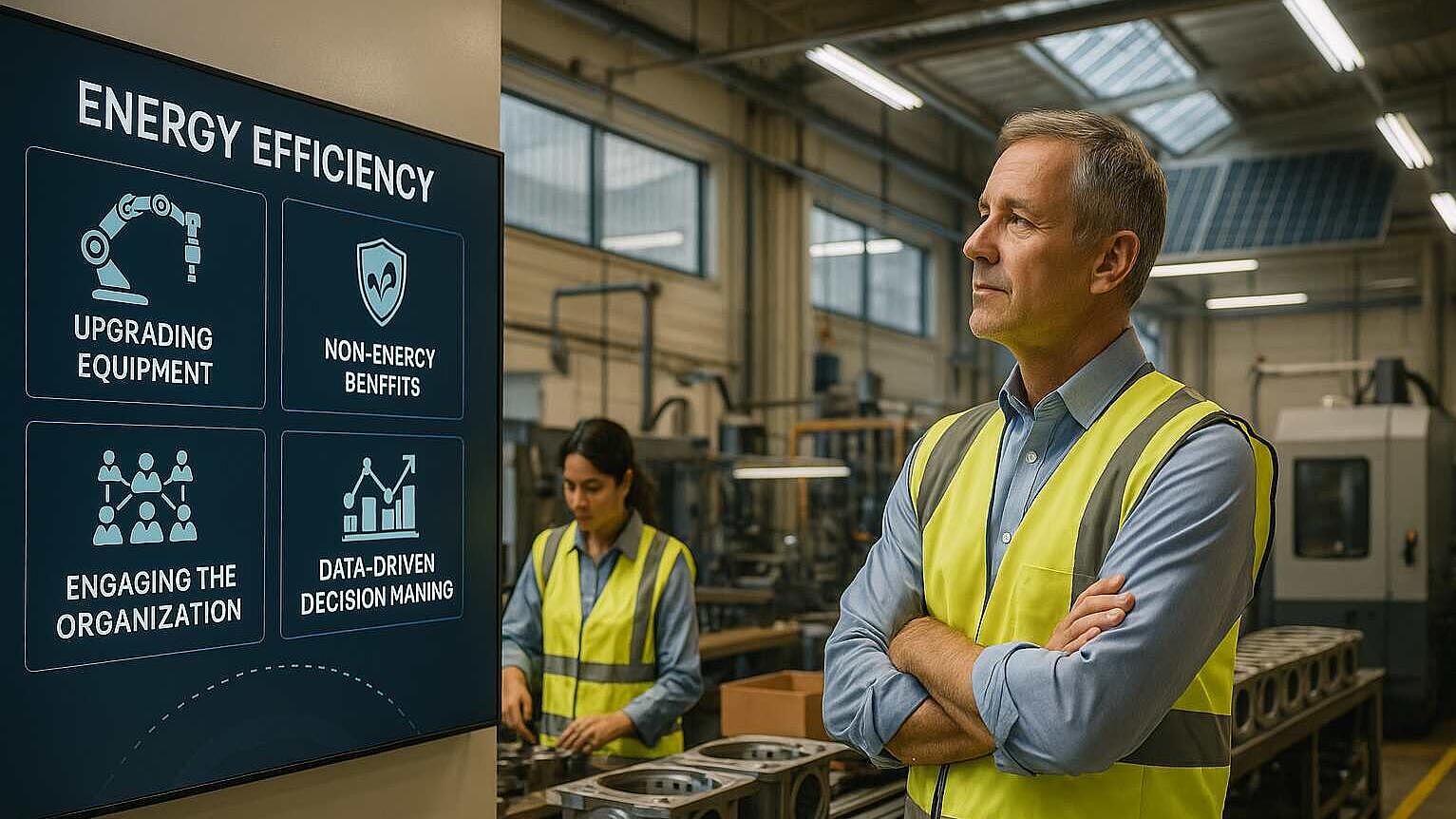 Energy Efficiency
Energy EfficiencyRethinking Energy Audits: How a Multiple Benefits Approach Empowers Sustainable Business
Summary
The paper discusses the Multiple Benefits Approach from the DEESME project, which aims to reframe energy audits as strategic tools for value creation in small and medium-sized enterprises (SMEs), beyond mere compliance. Traditional energy audits focus narrowly on energy and cost savings, overlooking broader benefits. DEESME's methodology integrates energy management with business strategy, aligning energy decisions with business goals.
The approach comprises a four-stage methodology: 1) Business Model Analysis, understanding the company's value drivers and customers; 2) Energy Analysis, tailored to the business’s unique priorities; 3) Multiple Benefits Analysis, identifying a range of benefits from energy measures, such as improved productivity, customer loyalty, and reduced legal risks; 4) Business Model Sustainability Advancement, refining the business model to leverage energy efficiency for value creation and operational excellence.
This new perspective on energy efficiency offers potential career opportunities for young professionals and students by aligning with sustainability megatrends, breaking professional silos, providing measurable impacts, and promoting real-world societal benefits.
Additionally, the paper briefly mentions Enerwhizz, a mobile quiz game, offering interactive learning on energy and sustainability topics and promoting engagement through gamification. Overall, DEESME's approach positions energy auditing as a catalyst for innovation and resilience in business, with significant implications for societal well-being and sustainability.
Open full article
Rethinking Energy Audits: How a Multiple Benefits Approach Empowers Sustainable Business
Moving Beyond Compliance: The New Age of Energy Auditing
Picture a typical energy audit in a small or medium-sized business (SME). It's often viewed as a regulatory box to tick—required by law, done as quickly and cheaply as possible, and usually filed away once complete. But what if that audit could be the launchpad for new business opportunities, improved products, happier employees, and a stronger reputation?
This is the promise of the Multiple Benefits Approach, pioneered in the DEESME project. Rather than treating energy audits as just another compliance headache, DEESME reframes them as strategic tools that unlock value across every aspect of a company. For young innovators and professionals, understanding this shift can open doors to impactful, future-proof careers.
Unpacking the Multiple Benefits Approach
The DEESME project’s methodology is a direct response to the reality that energy efficiency, while crucial for sustainability and cost control, often ranks low on the priority list of business leaders—especially in resource-constrained SMEs. The core insight is simple but powerful: energy efficiency projects don’t just save energy. They can also:
- Improve productivity and process reliability
- Reduce maintenance and operating costs
- Extend equipment lifetime
- Enhance the working environment (think better lighting and air quality)
- Boost staff morale and retention
- Increase customer loyalty
- Strengthen corporate reputation
- Bring in tax incentives and ensure regulatory compliance
The catch? These benefits are rarely captured in traditional audits, which tend to focus strictly on energy and cost savings.
DEESME addresses this gap by embedding the “multiple benefits mindset” into the entire audit process. The approach links energy management to business strategy and demonstrates that energy efficiency can—and should—advance general business objectives, from innovation to sustainability.
How It Works: The Four-Stage Methodology
At its heart, the DEESME approach is built on four stages that align energy decisions with business strategy:
1. Business Model Analysis
Start with understanding the company itself—not just its energy profile, but its business model. What are the key drivers of value? Who are the customers? What are the critical resources and activities? Using tools like the Business Model Canvas, auditors and managers work together to pinpoint where energy efficiency can support business goals, rather than distract from them.
2. Energy Analysis
Next comes a standard energy audit (as defined by EN 16247 and ISO 50002) and a detailed carbon footprint assessment. But unlike a one-size-fits-all technical review, the focus is on how these findings fit the business’s unique priorities and cost structure.
3. Multiple Benefits Analysis
Here, the audit goes beyond technical fixes and energy savings. The team identifies and quantifies a broad range of benefits that energy measures might deliver. These include:
- Value Proposition: Better, greener products or services
- Activities: More productive operations, reduced maintenance, lower carbon footprint, higher safety standards
- Resources: Lower energy and raw material consumption, higher employee satisfaction, more effective recycling
- Customers: Growing the share of ‘green’ customers, increasing loyalty and satisfaction
- Partners: Stronger supply chain relationships, easier regulatory compliance, reduced legal risks
Indicators are chosen and tailored for each business—measuring everything from employee satisfaction to customer acquisition rates, quality metrics, and reduced litigation risks.
4. Business Model Sustainability Advancement
Finally, the business model is reviewed and refined, informed by the newly revealed benefits of energy efficiency. The company can now pursue innovation or efficiency improvements, capitalizing on energy measures that directly support value creation and operational excellence. This cyclical process encourages ongoing learning and business evolution, not just one-off compliance.
Why This Matters for the Next Generation
For students and young professionals, this shift is much more than a technical update—it’s a mindset revolution. Instead of seeing energy work as a “cost center,” future leaders can position themselves as sustainability champions, innovation drivers, and strategic partners within any organization.
Key reasons this approach is a game-changer:
- It aligns with megatrends. The world is demanding more sustainable, resilient, and responsible business models. The multiple benefits approach helps companies—and those who work for them—stay ahead.
- It breaks silos. By connecting energy efficiency to HR, marketing, supply chain, and operations, professionals can work across departments, gaining a holistic view of the business.
- It’s measurable and actionable. With a toolbox of indicators and metrics, you can track progress, make the business case, and secure management buy-in for bold sustainability initiatives.
- It offers real-world impact. Improved air quality, safer workplaces, and more attractive products don’t just show up in spreadsheets—they improve people’s lives.
What Does This Look Like in Practice?
Imagine a manufacturer considering a new lighting system. The “old way” would focus on the payback from lower electricity bills. The multiple benefits approach, however, might reveal that the new lighting:
- Reduces eye strain and errors on the production line (quality benefit)
- Lowers maintenance downtime (cost benefit)
- Improves employee mood and reduces absenteeism (HR benefit)
- Enhances the company’s brand image for customers and recruits (marketing benefit)
Each of these outcomes can be measured and built into a compelling case for investment, shifting the narrative from “required expense” to “strategic opportunity.”
Take the Next Step: Test Your Knowledge with Enerwhizz!
Ready to challenge your understanding of energy, business, and sustainability? Play Enerwhizz—the fast-paced, multilingual mobile quiz. Each round lasts just 45 seconds. Compete in leagues, complete missions, and earn gems, prizes, and ET coins. It’s a fun and interactive way to deepen your knowledge and connect with peers in the energy transition!
Conclusion
The future of energy auditing—and indeed, of business—is not just about saving kilowatt-hours or euros. It’s about unlocking a spectrum of benefits that support sustainability, profitability, and societal well-being. The DEESME multiple benefits approach turns the humble energy audit into a springboard for business innovation and resilience.
For young professionals and students, mastering this integrated perspective offers a pathway to rewarding, impactful careers that make a difference for organizations and the planet alike.
More on NEB: https://ieecp.org/wp-content/uploads/2023/11/D3.1_Multiple-benefits-approach-of-energy-audit.pdf
More on D2050, the underlying EU project, check via “all EEIP projects”: https://projects.ee-ip.org/#ongoing-projects
More information on the EnerWhizz mobile quiz game, check: https://www.enerwhizz.info/



